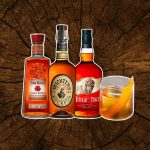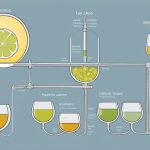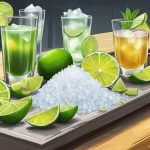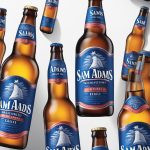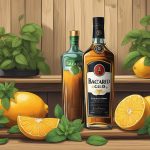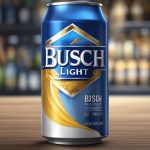Understanding the shelf life of wines is essential for both wine enthusiasts and casual drinkers alike. When it comes to Barefoot Wine, one of the more affordable and popular brands, consumers often ask about its longevity and when it may no longer be suitable for consumption. Like all wines, Barefoot Wine’s shelf life varies depending on whether the bottle is open or sealed and how it’s stored. Once opened, a bottle of Barefoot Wine should ideally be consumed within 3-5 days if refrigerated to maintain its characteristic flavors and prevent spoilage.

Unopened Barefoot Wine has a more extended shelf life, and if stored correctly, in a cool, dark place, some varietals such as chardonnay and pinot grigio can last for several years. However, as with any wine, the taste is potentially at its prime when consumed within a couple of years from the date of purchase. Factors such as exposure to light, temperature changes, and humidity all play critical roles in how a wine ages and its ultimate expiration.
Key Takeaways
- Barefoot Wine’s shelf life after opening is 3-5 days when refrigerated.
- Proper storage extends the life of unopened Barefoot Wine for several years.
- Environmental factors significantly influence wine’s aging and expiration timeline.
Table of Contents
Understanding Wine Basics
When exploring the topic of wine expiration, it’s important to consider the composition of wine, how aging affects its quality, and the various factors that influence its shelf life to make informed choices about storage and consumption.
Wine Composition and Types
Wine is an intricate beverage composed of water, alcohol, and a variety of compounds that contribute to its taste and aroma. The main types of wine include white wine, red wine, rosé, and sparkling wines, each with distinct characteristics. Barefoot wines, for example, offer a range of varietals from crisp Chardonnays to rich Merlots, made to suit different preferences.
Aging Process and Wine Quality
The aging process is crucial to the development of complex flavors in wines. While most Barefoot wines are crafted to be enjoyed within a short time after purchase, some wines, especially certain red varietals, can improve with age. It is the interaction between the wine’s compounds and environmental factors during aging that can enhance the quality and taste of vintage bottles.
Factors Influencing Wine Shelf Life
Several key factors affect the shelf life and wine expiration, influencing when a wine should be consumed for optimal quality:
- Consistency in Temperature: Fluctuations in temperature can accelerate aging and degrade wine quality.
- Humidity: Ideal humidity levels help maintain the integrity of the cork and prevent oxidation.
- Light: Exposure to light can negatively impact wine, particularly sparkling wines and white wines, which are more sensitive to light damage.
Understanding these elements can help wine enthusiasts maintain their collections, including Barefoot wines, ensuring each bottle is enjoyed at its best.
Storage Conditions and Preservation
Proper storage conditions can significantly extend the lifespan of Barefoot wine. By maintaining a consistent temperature and shielding the wine from light, enthusiasts can enjoy their bottles for a longer period.
Ideal Storage Conditions
Barefoot wine benefits from being stored in a cool, dark place. Consistency in temperature is key, with the ideal range hovering between 45-65 degrees Fahrenheit (7-18 degrees Celsius). Humidity also plays a role, and a level of 70% is often recommended to keep the cork from drying out and allowing air to seep into the bottle, which could spoil the wine.
The Impact of Temperature and Light
Fluctuations in temperature can affect wine’s flavor, leading to premature aging. Hence, refrigeration can be suitable for short-term storage, but long-term storage requires a consistent temperature to preserve wine’s integrity. Light, and in particular direct sunlight, can degrade wine by causing complex molecules responsible for flavor and color to break apart. Therefore, storing wine away from exposure to light is crucial.
Preserving an Opened Bottle
Once opened, the oxidation process begins due to exposure to air. To prolong an opened bottle of wine, it should be refrigerated and sealed with a wine stopper or vacuum pump to slow down oxidation. An opened bottle, if properly sealed, can last for up to 3 to 5 days, but this can vary based on the type of wine.
Identifying and Preventing Spoilage
To ensure the enjoyment of Barefoot wine, it’s important to recognize the signs of spoilage and know how to prevent it. Proper storage and handling can significantly extend the drinkability of the wine.
Signs of Spoiled Wine
A change in color can indicate that a wine has begun to oxidize. For example, white wines may turn a deep yellow or brownish straw color when spoiled, while red wines may appear brownish-orange. Besides the visual cue, the flavor and aroma of the wine are good indicators of spoilage. If the wine gives off a sharp, sour taste reminiscent of vinegar, or has a musty, barnyard smell, it is likely that the wine has been exposed to too much air contact and has spoiled. Such wines may also exhibit a loss in acidity, which can flatten the taste.
Preventive Measures Against Spoilage
To protect Barefoot wine from spoiling:
- Avoid Sunlight: Store the wine away from direct sunlight, as it can degrade and prematurely age the wine.
- Corking: Keep bottles with their cork moist by storing them on their side, which helps prevent the cork from drying out and allowing air to enter.
- Use Sulfites: Wines with sulfites are less likely to spoil quickly, as sulfites act as preservatives.
- Limit Air Contact: After opening, limit the wine’s exposure to air by re-corking it tightly. Tools like vacuum seals can help remove air from the bottle.
- Temperature Control: Store the wine at a consistent, cool temperature. Fluctuations can cause expansion and contraction, leading to spoilage.
The intentions are to refrigerate after opening and to consume within 3-5 days for optimal flavor. Although not common, freezing can be used in certain scenarios for preserving the wine, but care should be taken as it may alter the character of the wine.
Does Barefoot Wine Expire?
Understanding the expiration guidelines for Barefoot Wines ensures that one enjoys the best quality of the product. The lifespan of Barefoot Wine varies by type, and the way it is stored post-opening can significantly impact its taste and freshness.
Barefoot Wine Varietals and Lifespan
Barefoot Wine offers a variety of wines, including red, white, and sparkling wines. An unopened bottle of Barefoot red or white wine is typically best consumed within a window of 18 to 24 months from the date of bottling, as noted by Food & Wine. Sparkling selections, such as Barefoot Bubbly, suggest enjoying them a bit sooner to preserve their characteristic effervescence.
Handling and Consuming After Opening
Once opened, Barefoot wines should be treated with care to maintain their intended flavor. Red and white wines can last for approximately 3-5 days if they are properly refrigerated after opening. Barefoot Bubbly, being a sparkling wine, should be consumed within 1-3 days to enjoy its optimal taste and fizz.
Factors Specific to Barefoot Wines
Barefoot winery utilizes specific winemaking techniques to produce an affordable and enjoyable wine range. These wines, when unopened and stored in a cool, dark place, away from direct sunlight and temperature fluctuations, as advised by Culler Wines, will retain their quality within the expected lifespan. However, once opened, timeframes for consuming Barefoot wines become more stringent to avoid spoilage.
Practical Tips for Wine Lovers

Proper wine storage and serving techniques significantly affect the aging potential, flavor, and aroma of the wine. By following these guidelines, wine enthusiasts can ensure maximum enjoyment from each bottle.
How to Store Different Wine Types
- Red wines thrive in cool, consistent temperatures around 55°F, away from direct sunlight. They should be stored horizontally to keep the cork moist, preventing air from spoiling the wine.
- For white wines and sparkling wines, a chill environment slightly cooler than that for reds, perhaps in a fridge, helps maintain their freshness and flavor.
- Sparkling wines require careful storage to preserve their signature effervescence and bubbly quality. A vertical position in the refrigerator is recommended if they will be consumed soon after purchase.
Maintaining Wine Freshness
- Once opened, reseal the wine with its original cork or a wine stopper. Store open bottles of white and sparkling wines in the refrigerator to keep them fresh.
- Red wines should be kept in a cool, dark place after opening. Use within 2-3 days to preserve flavor and aroma.
Advice for Optimal Enjoyment
- Serve red wines slightly below room temperature to enhance their tasting experience, whereas white and sparkling wines are best enjoyed well-chilled.
- Evaluate the aging potential of a wine before opening it; some wines develop more complexity over time, while others are best consumed young.
By adhering to these guidelines, one can ensure that each sip delivers the intended flavor, aroma, and pleasure.
Frequently Asked Questions
In this section, we address some common inquiries regarding the longevity and proper storage of Barefoot wine.
How long can you keep an unopened bottle of Barefoot wine?
An unopened bottle of Barefoot wine typically has a shelf life of 18 to 24 months from the bottling date. However, some red wines may last up to three years if stored under optimal conditions. For more specifics on the shelf life, you might want to check Chef’s Resource.
Is it safe to consume Barefoot wine after the expiration date?
It is generally not recommended to consume Barefoot wine past its expiration date. While it might not be harmful, the quality and taste could be compromised.
Can Barefoot wine go bad if stored in the refrigerator?
Storing Barefoot wine in the refrigerator can help maintain its quality after opening. Nonetheless, even when refrigerated, it can degrade over time, particularly if it is not stored properly.
What is the shelf life of Barefoot wine once it has been opened?
Once opened, a bottle of Barefoot wine should ideally be consumed within 3-5 days to enjoy its best quality. It should also be kept refrigerated during this time. This is corroborated by information from Happy Muncher.
How can you locate the expiration date on a bottle of Barefoot wine?
The expiration date on a bottle of Barefoot wine can often be found on the label or imprinted on the bottle itself, close to the label. This date indicates how long the wine is expected to retain its optimal quality.
Does Barefoot wine require refrigeration after being opened?
After opening, Barefoot wine should be refrigerated to slow down the oxidation process. A resealed bottle of white or rosé wine can be stored in the fridge for up to a week, while sparkling varieties like Barefoot Bubbly are best consumed within 1-3 days. For more details on how to store wine after opening, you may refer to Barefoot Wine & Bubbly’s FAQ.
